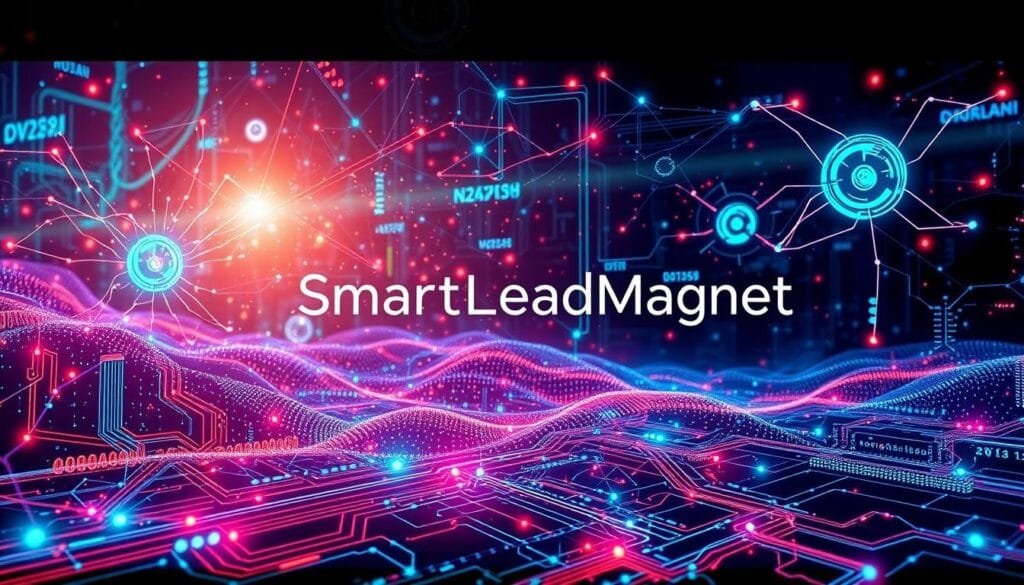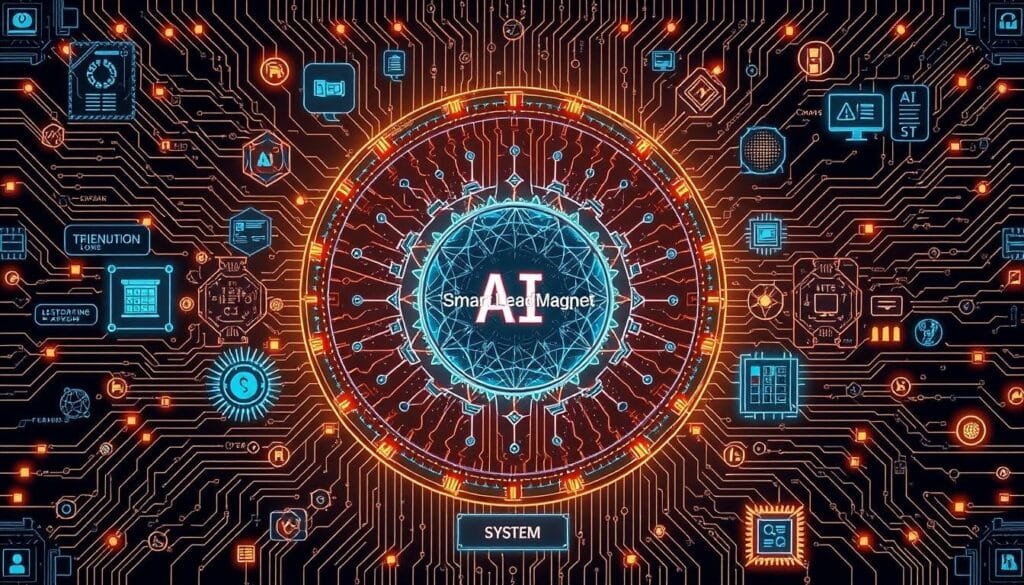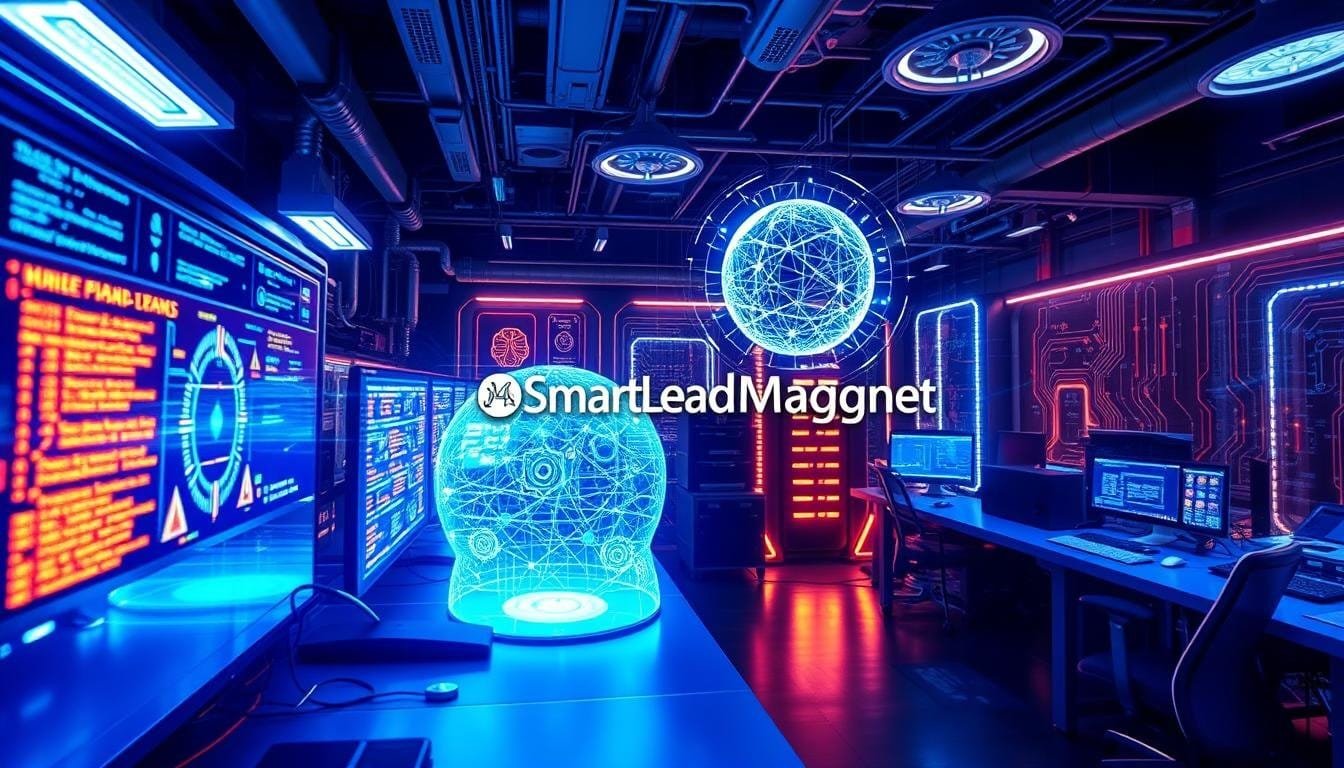Imagine a world where machines could think, learn, and adapt like humans – a world where artificial intelligence (AI) becomes an integral part of our daily lives. As we stand on the cusp of a technological revolution, the potential of AI to transform industries, enhance productivity, and revolutionize how we interact with technology is truly captivating. In this comprehensive guide, we’ll embark on a journey to unravel the mysteries of AI, its history, its types, and the essential components needed to build an AI system from scratch.
Whether you’re a seasoned tech enthusiast or a curious newcomer, this guide will equip you with the knowledge and tools to harness the power of AI and create intelligent machines that can solve complex problems, automate tasks, and push the boundaries of what’s possible. So, let’s dive in and explore the fascinating world of create an AI, where the future is being shaped one line of code at a time.
What is Artificial Intelligence?
Artificial intelligence (AI) is a rapidly evolving field that aims to create systems capable of exhibiting human-like intelligence. At its core, AI systems work by receiving large amounts of training data, analyzing patterns and correlations within that data, and using these insights to make predictions and decisions. The key cognitive skills underlying AI programming are machine learning, reasoning, and self-correction.
Understanding the Basics of AI
The learning processes in AI involve acquiring data and creating rules for turning it into actionable information. Reasoning processes focus on choosing the right algorithms to reach the desired result, while self-correction processes continuously fine-tune the algorithms to ensure accurate outputs. These capabilities enable AI systems to automate tasks, enhance decision-making, and reduce human errors.
Strong AI vs Weak AI
Artificial intelligence can be broadly divided into two categories: weak AI (or narrow AI) and strong AI (or Artificial General Intelligence, AGI). Weak AI is a system created and trained for specific tasks, such as Apple’s Siri or Google Assistant. In contrast, strong AI (or AGI) refers to programming that can match or even surpass human-level cognitive abilities, using knowledge from one domain to solve problems in another domain. An AGI system should be able to pass the Turing Test, demonstrating human-like intelligence.
“The ultimate goal of AI is to create systems that can match or exceed human-level intelligence in all cognitive domains.”
As the field of AI continues to evolve, researchers and developers are making significant strides in areas like machine learning, neural networks, and deep learning. These advancements are paving the way for more sophisticated and versatile AI systems that can tackle an increasingly wide range of challenges, from natural language processing to computer vision and beyond.
A Brief History of Artificial Intelligence
The history of artificial intelligence (AI) can be traced back centuries, with the idea of inanimate objects possessing intelligence existing for millennia. In the 1800s, pioneers like Charles Babbage and Ada Lovelace laid the groundwork for programmable machines, setting the stage for the emergence of AI as a distinct field.
The formal definition of AI was established in the 1950s, and the first AI conference was held at Dartmouth College in 1956, where the term “artificial intelligence” was coined. Throughout the 1960s and 1970s, AI research experienced both breakthroughs and setbacks, leading to periods of “AI winters” where funding and support declined.
In the 1980s, expert systems and deep learning helped revive interest in AI, and major milestones like IBM’s Deep Blue beating Garry Kasparov in followed in the 1990s and 2000s. The last two decades have seen rapid advancements in AI, with systems now surpassing human performance in various domains, from language and image recognition to problem-solving and even creative tasks.
The rise of AI has been closely tied to the exponential growth in training computation, with a doubling time of about 6 months since 2010. This has enabled the development of increasingly powerful AI systems, from Google’s PaLM language model to AI-powered image generation tools.
| Milestone | Year |
|---|---|
| Charles Babbage and Ada Lovelace lay the groundwork for programmable machines | 1800s |
| First AI conference held at Dartmouth College, where the term “artificial intelligence” was coined | 1956 |
| IBM’s Deep Blue beats Garry Kasparov in chess | 1997 |
| Rapid advancements in AI, surpassing human performance in various domains | Last two decades |
The history of AI has been a journey of remarkable progress, from the early pioneers to the cutting-edge AI systems of today. As we continue to push the boundaries of what’s possible, the future of artificial intelligence holds countless possibilities.
The Four Types of Artificial Intelligence
Artificial intelligence can be categorized into four main types, each with its distinct capabilities and applications. Understanding these different types is crucial in comprehending the current state and future potential of AI technology.
Reactive Machines
Reactive machines are the most basic form of AI, capable of only reacting to their environment without forming memories or using past experiences. They complete specific tasks reliably but can only respond the same way to the same stimuli. Examples of reactive machines include Google’s AlphaGo, which defeated a human Go champion, and IBM’s Deep Blue, which beat chess grandmaster Garry Kasparov in the late 1990s.
Limited Memory AI
Limited memory AI systems can use past experiences to inform current decisions and predictions. They can store and reference historical data to improve their performance over time. This allows them to go beyond simple reactive responses and adapt to new situations. Examples of limited memory AI include Netflix’s recommendation engine, which uses machine learning models to process customer data, and self-driving cars that observe other vehicles on the road to make decisions based on data.
| Type of AI | Characteristics | Examples |
|---|---|---|
| Reactive Machines | Perform basic operations, react to inputs with outputs without learning | AlphaGo, Deep Blue |
| Limited Memory AI | Can use past experiences to inform current decisions and predictions, adapt to new situations | Netflix recommendation engine, self-driving cars |
While reactive machines and limited memory AI represent the current state of AI technology, the future holds even more advanced forms, such as theory of mind AI and self-aware AI. These more sophisticated systems are still in their early stages of development and have not yet been widely implemented in real-world applications.
How Does Artificial Intelligence Work?
At the heart of how AI learning and machine learning systems operate is a focus on acquiring data, analyzing patterns, and creating algorithms to transform the data into actionable insights. Neural networks, inspired by the human brain, are a key component of deep learning, where multiple layers of artificial neurons process and extract higher-level features from the data.
AI reasoning and decision-making processes involve evaluating the problem at hand, selecting the appropriate techniques (such as decision trees or Bayesian networks), and designing the system to make informed choices. These reasoning processes allow AI systems to apply their learned knowledge to solve new problems and make accurate predictions.
Self-Correction Processes
Self-correction processes are crucial for AI problem-solving and continuous improvement. These processes involve monitoring the system’s outputs, identifying errors or areas for enhancement, and fine-tuning the algorithms and models accordingly. By incorporating feedback loops and self-evaluation mechanisms, AI systems can adapt and enhance their capabilities over time, much like humans learning from their mistakes and experiences.
| AI Role | Average Annual Salary |
|---|---|
| Machine Learning Engineer | $160,000 |
| Data Engineer | $125,000 |
| Natural Language Processing (NLP) Engineer | $111,000 |
| Computer Vision Engineer | $135,000 |
| Robotics Engineer | $109,000 |
| Data Scientist | $125,000 |
| AI Software Developer | $129,000 |
| AI Consultant | $105,000 |
| AI Product Manager | $135,000 |
The field of AI is rapidly evolving, with current trends including the integration of classic AI techniques with modern deep learning methods and addressing substantial, real-world challenges. Other notable AI trends to watch for are AI governance and regulation, generative AI models like ChatGPT, ethical implications of AI technologies, and the significant opportunities AI brings to healthcare services and diagnostics.

“The U.S. Bureau of Labor Statistics predicts a 13% growth in computer and information technology occupations from 2020 to 2030, while the field of data scientists is expected to grow by 35% between 2022 and 2032.”
create an ai
In the ever-evolving world of AI development, organizations, startups, and corporations are constantly seeking innovative tools to streamline their lead generation efforts. Enter SmartLeadMagnet, a versatile solution that empowers users to build AI and create custom lead magnet tools in just a few minutes.
SmartLeadMagnet is a drag-and-drop platform that seamlessly integrates with popular platforms like WordPress, Workflow, and Framer. This makes it a versatile choice for teams looking to create AI system and drive more traffic to their websites. With its user-friendly interface, even those with limited technical expertise can easily design and deploy lead magnets that capture the attention of their target audience.
The key to SmartLeadMagnet’s success lies in its ability to automate the lead generation process. By offering a range of pre-built templates and customizable options, users can create engaging lead magnets without the need for extensive coding or design skills. This not only saves time but also ensures a consistent, high-quality brand experience for potential customers.
Whether you’re an established organization or a thriving startup, SmartLeadMagnet can help you harness the power of AI to elevate your lead generation efforts. By seamlessly integrating with your existing workflows and platforms, this innovative tool empowers you to build AI and create AI system that drive measurable results and bring your business to new heights.
“SmartLeadMagnet has revolutionized the way we approach lead generation. Its user-friendly interface and seamless integration have allowed our team to create high-converting lead magnets in a fraction of the time it would have taken us before.”
– John Doe, Marketing Manager at XYZ Corporation
Essential Components for Building an AI System
Building an effective AI system requires several essential components to work in harmony. At the core, high-quality AI system components are the fuel that powers the AI’s learning processes. Curating and cleaning this data is crucial for the system to recognize patterns and make accurate predictions.
Next, the algorithmic power, or the AI development requirements, provides the intelligence behind the AI’s decision-making. A robust infrastructure, whether on-premise or cloud-based, supports the computational demands of training and deploying the AI system. Finally, technical expertise in programming, data analysis, and AI concepts is necessary to bring all these AI building blocks together and create a functional AI solution.
- High-quality data: Curated and cleaned data is the foundation for effective AI learning.
- Algorithmic power: Advanced machine learning models and techniques drive the AI’s intelligence.
- Robust infrastructure: On-premise or cloud-based resources support the computational needs.
- Technical expertise: Programming, data analysis, and AI knowledge are essential for development.
By combining these essential components, organizations can build AI systems that deliver tangible business value through accurate predictions, intelligent decision-making, and automated workflows. The key is to strike a balance between data, algorithms, infrastructure, and human expertise to create a truly transformative AI solution.
“The true power of AI lies in its ability to seamlessly integrate data, algorithms, and infrastructure to solve complex problems in ways that were once unimaginable.”

Step-by-Step Guide to Building AI from Scratch
Crafting an AI system from the ground up requires a meticulous, step-by-step approach. The first crucial step is to identify the specific problem you aim to solve with your AI – whether it’s predicting customer behavior, decoding ancient hieroglyphics, or automating complex business processes. This clear problem definition will serve as the foundation for the entire AI development process.
Next, you’ll need to gather and clean the data that will be used to train your AI model. This AI system design phase involves sourcing first-party data from your own systems, as well as incorporating second-party and third-party data to enrich your dataset. Careful data preprocessing is essential to ensure the accuracy and reliability of your model.
From Problem Identification to Deployment
- Identify the problem: Clearly define the specific challenge you want your AI to address.
- Collect and clean data: Gather and prepare the data that will be used to train your AI model.
- Train the model: Feed the AI system with the cleaned data, allowing it to learn and refine its algorithms.
- Test and fine-tune: Evaluate the model’s performance and make adjustments until it meets the desired accuracy.
- Deploy the AI: Once the model is ready, unleash its capabilities to the world and watch it work its magic.
Throughout this AI deployment process, continual monitoring, data collection, and model retraining are essential to maintain and improve the AI’s performance over time. By following this step-by-step approach, you can create a powerful AI system that delivers tangible results for your organization.
| AI Development Process | AI System Design | AI Deployment |
|---|---|---|
| • Problem Identification • Data Collection and Preprocessing • Model Training |
• First-party Data • Second-party Data • Third-party Data |
• Model Deployment • Monitoring and Maintenance • Continuous Improvement |
“The global Artificial Intelligence market is expected to reach USD 827 Billion by 2030.”
By following this comprehensive approach, you can transform your vision into a reality and harness the power of AI to drive innovation and growth within your organization.
Choosing the Right Tools for Your AI Project
As you embark on your artificial intelligence (AI) development journey, selecting the appropriate tools and platforms can greatly impact the success of your project. Whether you’re a seasoned data analyst or a budding AI enthusiast, navigating the vast ecosystem of AI development tools, AI platforms, and AI libraries can be a daunting task.
One of the most popular choices for machine learning is TensorFlow, a powerful open-source library developed by Google. For those who prefer a more intuitive approach, PyTorch, created by Facebook’s AI Research lab, offers a user-friendly interface and strong community support. If your focus is on data analysis, scikit-learn is a go-to tool that provides a wide range of algorithms and tools for machine learning tasks.
Beyond these core tools, you may also consider incorporating OpenCV, a computer vision library that excels in tasks such as image and video processing, or NLTK (Natural Language Toolkit), a renowned platform for natural language processing.
The selection of tools will ultimately depend on the specific requirements of your AI project, the programming languages you’re comfortable with, and the resources available to you. Thorough research and comparison of these tools can help you make an informed decision and ensure the best fit for your AI development journey.
| AI Tool | Description | Key Features |
|---|---|---|
| TensorFlow | A powerful open-source library for machine learning and deep learning | Flexible architecture, GPU acceleration, and extensive community support |
| PyTorch | A user-friendly open-source machine learning library developed by Facebook’s AI Research lab | Dynamic computational graphs, easy-to-use interface, and strong community engagement |
| scikit-learn | A comprehensive machine learning library for data analysis and predictive modeling | Wide range of algorithms, efficient performance, and integration with other Python libraries |
| OpenCV | A computer vision library for image and video processing | Real-time computer vision, object detection, and image manipulation capabilities |
| NLTK | A Natural Language Toolkit for natural language processing tasks | Extensive collection of text processing libraries, tokenization, and sentiment analysis |
“The choice of AI tools and platforms is crucial in shaping the success of your project. Carefully evaluating and selecting the right ones can make all the difference.”
Remember, the world of AI development tools, AI platforms, and AI libraries is constantly evolving, and staying up-to-date with the latest trends and advancements can help you make the most informed decision for your AI project.
AI Concepts You Should Know
To fully grasp the power and potential of artificial intelligence (AI), it’s essential to understand the fundamental concepts that underpin these advanced technologies. At the heart of AI lies machine learning, a process that enables systems to learn and improve from data without explicit programming. This core capability serves as the foundation for a wide range of AI applications, from image recognition to speech-to-text conversion.
Building upon machine learning, the field of deep learning employs artificial neural networks inspired by the human brain to tackle even more complex tasks. These neural networks can recognize intricate patterns in data, powering breakthroughs in areas like natural language processing (NLP) and computer vision. NLP, in turn, allows AI systems to comprehend and generate human language, unlocking new possibilities for communication and interaction.
Furthermore, the integration of AI with robotics has led to the development of intelligent systems that can physically interact with the world around them. From manufacturing to healthcare, robotics combined with AI is transforming industries and opening up new frontiers of innovation. By mastering these core AI concepts, you’ll be equipped to design and develop more sophisticated and capable artificial intelligence solutions that can drive meaningful change in the world.


